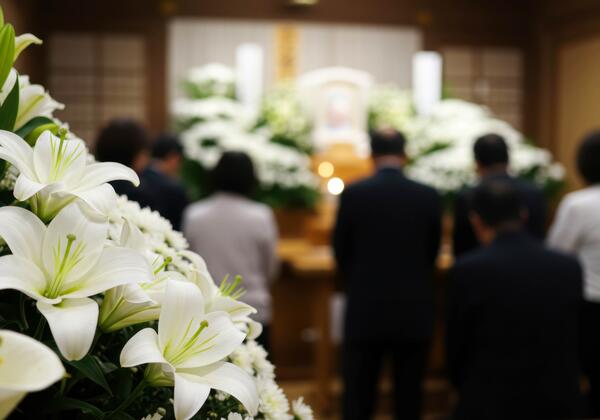
Buddhist Funeral Planning: A Guide For Families And Caregivers
Buddhist funeral planning calls for sensitivity, understanding, and a commitment to preserving sacred traditions. Each decision made during this time carries emotional and spiritual weight, shaping how families honor the life and legacy of their loved ones.
Caregivers and family members must create a ceremony that offers peace to the departed while supporting those left behind in their grief. Balancing respect for tradition with the personal wishes of the deceased often requires thoughtful coordination and a clear sense of purpose.
Read on to learn how families and caregivers can thoughtfully plan a Buddhist funeral that honors both faith and memory.
Understanding Key Elements of Buddhist Funerals
Before planning a Buddhist funeral, it’s important to understand the beliefs and customs that shape these ceremonies. These foundations help guide decisions and ensure the service reflects genuine respect for Buddhist traditions.
To build a meaningful and respectful ceremony, the following key elements are important to consider:
- Acceptance of death: Buddhists view death as a natural part of the cycle of life. The funeral reflects an acceptance of the impermanence of life, with families and loved ones facing the inevitable with grace and understanding.
- Calm environment: A peaceful environment is crucial during ceremonies. Loud displays or display of wealth are discouraged.
- Simple funeral rites: The emphasis remains on simplicity. Extravagant displays or bright colors are avoided during ceremonies.
Each of these elements ensures that the funeral remains a sincere expression of Buddhist values, offering peace and dignity to both the deceased and those honoring their memory.
Preparing for the Funeral Ceremony
Understanding the basics is important, but thoughtful preparation shapes a respectful and meaningful funeral ceremony. Attention to ritual, timing, and tradition helps families create a service that feels authentic and sincere.
To plan a Buddhist funeral ceremony with care and respect, the following elements are important:
- Buddhist funeral rites: Traditional Buddhist funeral rites may involve chanting, offerings, and prayers aimed at generating positive karma for the deceased person.
- Buddhist monks' involvement: Buddhist monks often lead prayers and guide families during the funeral service.
- Bathing ceremony: A bathing ceremony may be performed where the body is respectfully cleaned, symbolizing purification.
- Memorial services: Families may hold memorial services on specific days after death, such as the third, seventh, and forty-ninth days, helping the spirit in its stage of rebirth.
Working with providers who specialize in Buddhist funeral services makes the planning process more manageable. Their understanding of rituals and customs helps ensure that every aspect of the ceremony aligns with Buddhist teachings and the family's personal wishes.
Honoring Buddhist Funeral Etiquette
Showing respect during a Buddhist funeral involves more than attending; it requires careful attention to behavior, attire, and offerings. Thoughtfulness in these areas helps maintain the solemn spirit of the ceremony.
Below are important etiquette practices to observe:
- Clothing choices: Guests are expected to wear plain white or dark-colored clothing, reflecting humility and mourning. Avoid bright colors, shiny fabrics, or ornate accessories, as these are seen as distractions from the ceremony's quiet purpose.
- Prayer position: During prayers and chanting, participants usually sit or kneel with calm, attentive posture. It is considered disrespectful to fidget, stretch out legs toward the altar, or engage in unnecessary conversation during the rituals.
- Offering flowers: Bringing simple, modest flower arrangements, especially white or yellow flowers, is a meaningful gesture. Floral displays should be tasteful and avoid strong perfumes or elaborate designs that might disrupt the peaceful setting.
- Gifts of food: Providing food for the monks, either directly or through donations, is a respectful way to honor Buddhist traditions. Families may also arrange simple meals after the service to thank guests and monks for their presence and support.
Following these practices shows sincere respect for the deceased and their family, helping create an atmosphere of dignity and compassion throughout the funeral service.
Considering Burial, Cremation, and Memorials
After the funeral ceremony, families must decide how to respectfully handle the body according to Buddhist practices. This decision reflects both cultural traditions and personal wishes.
To help guide this important step, the following are common options considered in Buddhist funeral customs:
- Cremation services: Cremation is widely practiced in many Buddhist cultures. The body is cremated after prayers and ceremonies, symbolizing the release of the spirit from its physical form.
- Cemetery burial: Some Buddhist families choose traditional burial. A burial plot is selected, and services are conducted with chants and blessings to honor the deceased.
- Sky burials: In Tibetan Buddhist traditions, sky burials involve leaving the body exposed in nature, usually on a mountain, where it can return to the elements. This practice highlights the Buddhist teaching of impermanence and compassion for living creatures.
- Organ donation: In keeping with Buddhist values of compassion and generosity, organ donation is viewed positively. Offering parts of the body to help others can be seen as an act of kindness that generates good karma.
Choosing the right option helps families honor the deceased’s beliefs while supporting the spirit's path toward future lives.
Final Thoughts
Every Buddhist funeral is a personal reflection of love, gratitude, and hope for the future. Though customs provide a framework, the heart of the ceremony lies in the genuine care given to honoring a life and supporting a peaceful transition. Families and caregivers who approach the planning with mindfulness can create moments that offer quiet strength, lasting comfort, and a profound sense of connection across generations.